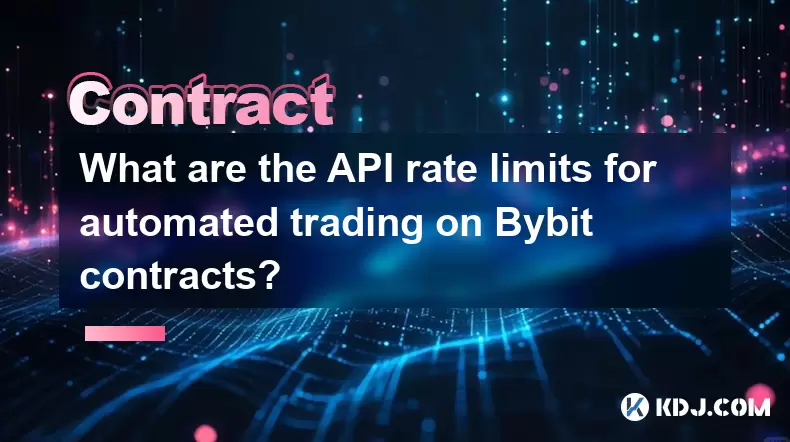-
 Bitcoin
Bitcoin $117500
2.15% -
 Ethereum
Ethereum $3911
6.19% -
 XRP
XRP $3.316
10.79% -
 Tether USDt
Tether USDt $1.000
0.01% -
 BNB
BNB $787.2
2.24% -
 Solana
Solana $175.2
4.15% -
 USDC
USDC $0.9999
0.00% -
 Dogecoin
Dogecoin $0.2225
8.40% -
 TRON
TRON $0.3383
0.28% -
 Cardano
Cardano $0.7868
6.02% -
 Stellar
Stellar $0.4382
9.34% -
 Hyperliquid
Hyperliquid $40.92
7.56% -
 Sui
Sui $3.764
7.63% -
 Chainlink
Chainlink $18.48
10.66% -
 Bitcoin Cash
Bitcoin Cash $582.1
1.88% -
 Hedera
Hedera $0.2601
6.30% -
 Avalanche
Avalanche $23.33
4.94% -
 Ethena USDe
Ethena USDe $1.001
0.02% -
 Litecoin
Litecoin $122.3
2.04% -
 UNUS SED LEO
UNUS SED LEO $8.969
-0.27% -
 Toncoin
Toncoin $3.339
0.86% -
 Shiba Inu
Shiba Inu $0.00001287
4.30% -
 Uniswap
Uniswap $10.43
7.38% -
 Polkadot
Polkadot $3.861
5.08% -
 Dai
Dai $1.000
0.02% -
 Bitget Token
Bitget Token $4.513
3.41% -
 Monero
Monero $267.7
-6.18% -
 Cronos
Cronos $0.1499
4.14% -
 Pepe
Pepe $0.00001110
5.15% -
 Aave
Aave $284.9
8.28%
What is the slippage of Bitcoin contract transactions? How to reduce the impact of slippage?
Slippage in Bitcoin trading is the difference between expected and executed trade prices, influenced by market volatility and liquidity; using limit orders and trading during high liquidity can reduce it.
May 03, 2025 at 08:42 am

What is the slippage of Bitcoin contract transactions? How to reduce the impact of slippage?
Slippage in the context of Bitcoin contract transactions refers to the difference between the expected price of a trade and the actual executed price. This phenomenon can occur in both buying and selling transactions and is a common concern for traders in the cryptocurrency market. Understanding slippage and knowing how to minimize its impact is crucial for anyone engaging in Bitcoin contract trading.
Understanding Slippage in Bitcoin Contract Transactions
Slippage happens due to various factors, including market volatility, liquidity, and the speed of transaction execution. When a trader places an order, the market might have moved before the order is filled, resulting in a different price than anticipated. In highly volatile markets like Bitcoin, slippage can be particularly significant, as prices can change rapidly within seconds.
Causes of Slippage
Several factors contribute to slippage in Bitcoin contract transactions:
- Market Volatility: Bitcoin's price can fluctuate wildly, especially during news events or market sentiment shifts. High volatility increases the likelihood of slippage.
- Liquidity: If there is not enough liquidity in the market, large orders can move the price significantly, leading to slippage. Low liquidity markets are more prone to slippage.
- Order Size: Larger orders are more likely to cause slippage because they may not be filled at a single price point. Traders need to be cautious with the size of their orders.
- Execution Speed: The time it takes for an order to be executed can also lead to slippage. Faster execution reduces the chance of price changes before the order is filled.
Strategies to Reduce Slippage
To minimize the impact of slippage, traders can employ several strategies:
- Use Limit Orders: Limit orders allow traders to specify the price at which they want to buy or sell. This can prevent slippage by ensuring the trade only executes at the desired price. However, there is a risk that the order may not be filled if the market does not reach the specified price.
- Trade During High Liquidity Periods: Trading when the market is most active can help reduce slippage. High liquidity periods typically occur during major market sessions and can provide more stable prices.
- Break Up Large Orders: Instead of placing a single large order, traders can break it into smaller orders. This strategy, known as iceberg orders, can help minimize the impact on the market and reduce slippage.
- Monitor Market Conditions: Keeping an eye on market conditions and volatility can help traders anticipate potential slippage. Using tools like volatility indicators can aid in making informed trading decisions.
- Choose the Right Exchange: Different exchanges have varying levels of liquidity and execution speeds. Selecting an exchange with high liquidity and fast execution can help reduce slippage.
Practical Steps to Implement These Strategies
Implementing these strategies requires careful planning and execution. Here are detailed steps for each strategy:
Using Limit Orders:
- Open your trading platform and navigate to the order entry section.
- Select the type of order as "Limit Order."
- Enter the desired price at which you want to buy or sell Bitcoin.
- Set the quantity of Bitcoin you wish to trade.
- Review the order details and submit the order.
Trading During High Liquidity Periods:
- Research the typical trading volumes and liquidity patterns of the Bitcoin market.
- Identify the peak trading hours, which are often during the overlap of major market sessions (e.g., when both the Asian and European markets are open).
- Plan your trades to coincide with these high liquidity periods.
Breaking Up Large Orders:
- Determine the total quantity of Bitcoin you want to trade.
- Divide this quantity into smaller, manageable chunks.
- Place multiple orders for these smaller chunks, either simultaneously or at slightly different times.
- Monitor the market's reaction to each order and adjust your strategy as needed.
Monitoring Market Conditions:
- Use trading platforms that offer real-time market data and volatility indicators.
- Set up alerts for significant price movements or changes in volatility.
- Regularly review market news and events that could impact Bitcoin's price.
Choosing the Right Exchange:
- Research different cryptocurrency exchanges and compare their liquidity levels and execution speeds.
- Read user reviews and check the exchange's reputation for reliability.
- Sign up for an account on the chosen exchange and familiarize yourself with its trading interface.
The Role of Technology in Reducing Slippage
Advancements in trading technology have also played a significant role in reducing slippage. Automated trading algorithms and high-frequency trading systems can execute orders at lightning speeds, minimizing the time between order placement and execution. Additionally, some platforms offer features like slippage protection, which automatically adjusts orders to minimize the impact of price changes.
Real-World Examples of Slippage in Bitcoin Trading
To illustrate the concept of slippage, consider the following scenarios:
- Scenario 1: A trader places a market order to buy 10 BTC at a price of $50,000. Due to high volatility, the order is filled at $50,500, resulting in a slippage of $500 per BTC.
- Scenario 2: A trader wants to sell 5 BTC at $45,000 using a limit order. The market price drops to $44,500 before the order is filled, and the trader's order remains unfilled, avoiding slippage but missing the trade.
These examples highlight the importance of understanding and managing slippage in Bitcoin contract transactions.
Frequently Asked Questions
Can slippage be completely eliminated in Bitcoin trading?
- While it is not possible to completely eliminate slippage, traders can use various strategies and tools to minimize its impact. The effectiveness of these strategies depends on market conditions and the trader's execution.
How does slippage affect long-term Bitcoin investors?
- Long-term investors are generally less affected by slippage compared to short-term traders. However, slippage can still impact the cost basis of their investments, especially when entering or exiting large positions.
Is slippage more common in decentralized exchanges (DEXs) than in centralized exchanges (CEXs)?
- Slippage can be more pronounced in DEXs due to lower liquidity and higher volatility. However, the difference can vary depending on the specific exchange and market conditions.
What role does the blockchain's transaction speed play in slippage?
- The speed of blockchain transactions can indirectly affect slippage. Faster transaction confirmations can reduce the time between order placement and execution, potentially minimizing slippage. However, the primary factors influencing slippage are market conditions and order execution speed.
Disclaimer:info@kdj.com
The information provided is not trading advice. kdj.com does not assume any responsibility for any investments made based on the information provided in this article. Cryptocurrencies are highly volatile and it is highly recommended that you invest with caution after thorough research!
If you believe that the content used on this website infringes your copyright, please contact us immediately (info@kdj.com) and we will delete it promptly.
- FTT Token's Wild Ride: Creditor Repayments vs. Market Drop - A New Yorker's Take
- 2025-08-08 07:10:12
- Floki Crypto Price Prediction: Riding the Robinhood Rocket or Just a Meme?
- 2025-08-08 07:15:12
- EigenLayer, Restaking, and Ethereum: Navigating the Hype and the Hazards
- 2025-08-08 06:30:12
- Super Bowl 59: Jon Batiste to Jazz Up the National Anthem
- 2025-08-08 06:30:12
- Cold Wallet Crypto in 2025: The Future is Now, Ya'll
- 2025-08-08 05:10:13
- MAGACOIN, SOL, and ADA: A Tale of Shifting Tides in Crypto
- 2025-08-08 05:10:13
Related knowledge

What is the minimum deposit for OKX contracts?
Aug 08,2025 at 07:00am
Understanding OKX Contract Trading BasicsOKX is one of the leading cryptocurrency derivatives exchanges, offering a wide range of perpetual and future...

Where can I find the OKX trading calculator?
Aug 08,2025 at 07:49am
Understanding the OKX Trading Calculator FunctionalityThe OKX trading calculator is a powerful analytical tool designed to assist traders in estimatin...

Are there any fees for futures settlement on OKX?
Aug 08,2025 at 05:35am
Understanding Futures Settlement on OKXFutures settlement on OKX refers to the process by which open futures contracts are automatically closed or mar...

How to use the OKX margin calculator for futures?
Aug 08,2025 at 05:15am
Understanding the OKX Margin Calculator for FuturesThe OKX margin calculator is a specialized tool designed to assist traders in estimating the requir...

How to find and copy experienced traders on Bybit contracts?
Aug 08,2025 at 06:00am
Understanding Copy Trading on BybitBybit offers a copy trading feature that allows users to automatically replicate the contract positions of experien...

What are the API rate limits for automated trading on Bybit contracts?
Aug 08,2025 at 06:08am
Understanding API Rate Limits on BybitWhen engaging in automated trading on Bybit contracts, understanding the API rate limits is essential to prevent...

What is the minimum deposit for OKX contracts?
Aug 08,2025 at 07:00am
Understanding OKX Contract Trading BasicsOKX is one of the leading cryptocurrency derivatives exchanges, offering a wide range of perpetual and future...

Where can I find the OKX trading calculator?
Aug 08,2025 at 07:49am
Understanding the OKX Trading Calculator FunctionalityThe OKX trading calculator is a powerful analytical tool designed to assist traders in estimatin...

Are there any fees for futures settlement on OKX?
Aug 08,2025 at 05:35am
Understanding Futures Settlement on OKXFutures settlement on OKX refers to the process by which open futures contracts are automatically closed or mar...

How to use the OKX margin calculator for futures?
Aug 08,2025 at 05:15am
Understanding the OKX Margin Calculator for FuturesThe OKX margin calculator is a specialized tool designed to assist traders in estimating the requir...

How to find and copy experienced traders on Bybit contracts?
Aug 08,2025 at 06:00am
Understanding Copy Trading on BybitBybit offers a copy trading feature that allows users to automatically replicate the contract positions of experien...

What are the API rate limits for automated trading on Bybit contracts?
Aug 08,2025 at 06:08am
Understanding API Rate Limits on BybitWhen engaging in automated trading on Bybit contracts, understanding the API rate limits is essential to prevent...
See all articles

























































































